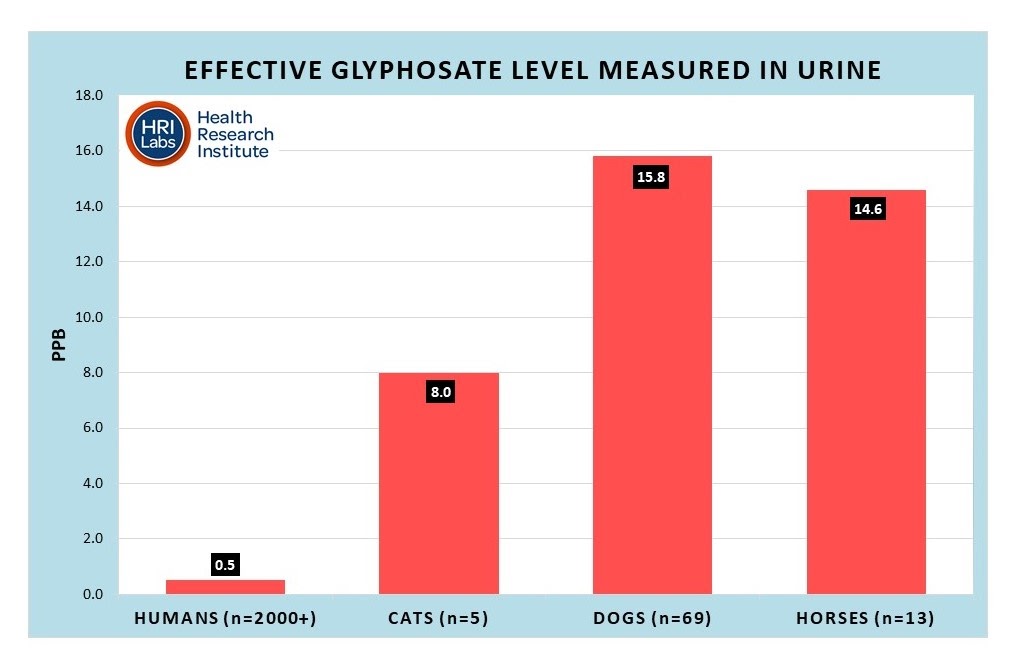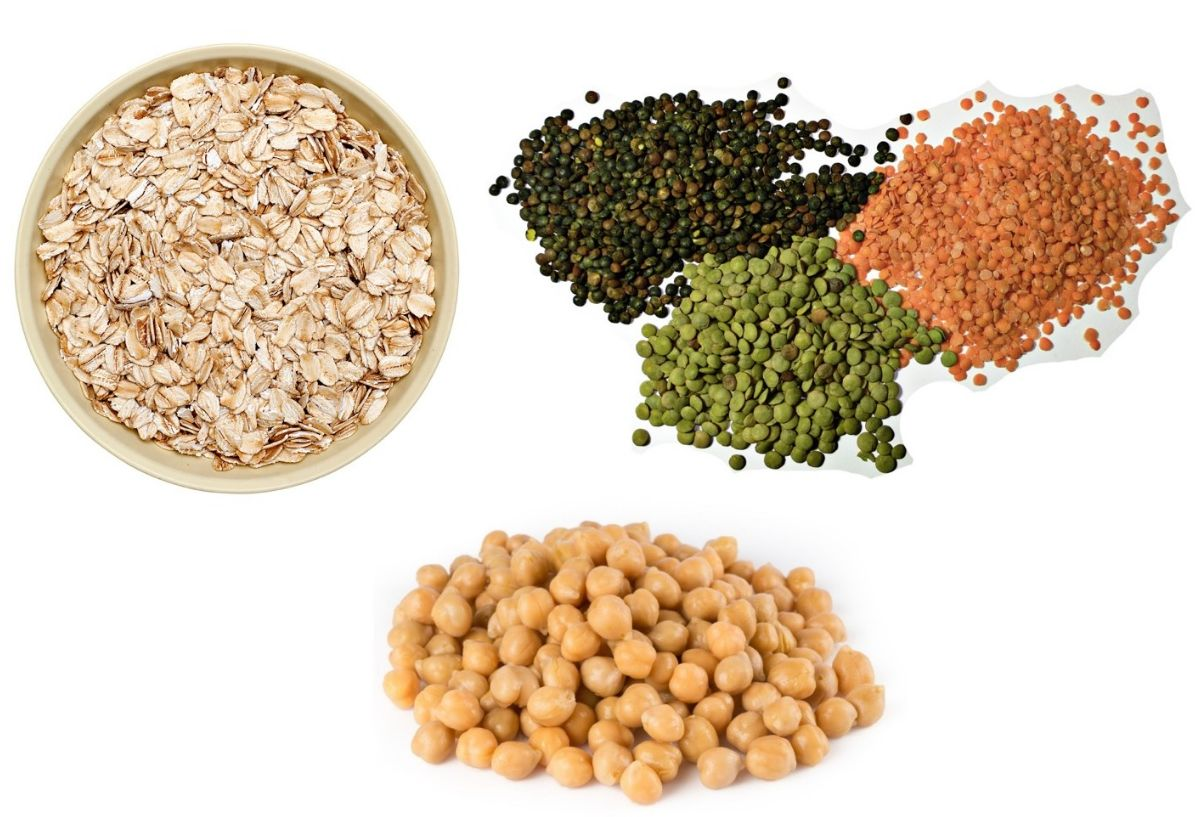Glyphosate Tissue Testing
PRODUCTS
Glyphosate Tissue Testing
$475 (includes shipping of testing kit)
Test any tissue, including tumors, for Glyphosate (pesticide). Animal Glyphosate tests have shown unexpectedly high exposure in animals. Testing is available for dogs, cats, or horses.
Glyphosate exposure in excess of 0.01ppb may be linked to increased salivation, burns in the mouth and throat, nausea, vomiting, diarrhea, decreased mineral and vitamin absorption, impaired thyroid function, non-Hodgkin’s lymphoma, leukemia, multiple myeloma, B-cell lymphoma, bone cancer, kidney cancer, skin tumors, pancreatic islet cell tumors, and other cancers.
A tissue sample size of 3g+ is desired, though if you have less, the tissue sample may still be tested. Contact us for more information.
Learn more:
What is the HRI "Animal Exposure Study"?
Test your dog, cat, or horse for glyphosate by gold standard LC-MS/MS instrumentation. Just a small urine sample is required. Limits of detection (LOD) are highly sensitive at 0.02 part per billion (ppb).
What is Glyphosate?
Glyphosate is a popular herbicide used to kill certain plants and grasses, manage how plants grow, get crops ready for harvest, and ripen fruit. It’s been in the news recently because of concerns about health risks.
Where Is Glyphosate Used?
Glyphosate is one of the world’s most common herbicides. It’s the active ingredient in popular weed-control products like Roundup, Rodeo, and Pondmaster. Many farmers use it during food production.
It’s often used on:
- Fruit and vegetable crops
- Glyphosate-resistant crops like canola, corn, cotton, soybeans, sugar beets and alfalfa. Food crops like wheat, garbanzo beans, oats that are killed by glyphosate to make them easier to harvest.
- Plantings, lawns, greenhouses, aquatic plants, and forest plantings
Exposure to Glyphosate in Your Lawn and Garden
If you use a weed killer with glyphosate on your lawn or garden, your dog may be exposed to glyphosate by breathing it in, getting it on their paws or skin, or getting it in their eyes.
You have joined a growing group of people who care about animals in a citizen-science effort. We aim to find answers to why animal exposure to glyphosate is measuring much higher than human exposure.
Could the source be oats, soy, lentils, chickpeas or other ingredients known to be sprayed with large amounts of glyphosate? Could it be activity in grass and fields? Could it be an unexpected source like pets consuming deer poop (ugh, yes, we know!)? Help find out by participating.
When dogs began getting tested by HRI labs they noticed a disturbing result. One dog had a level 200 times higher than the human average. It made the lab wonder, “where is all this glyphosate coming from?” To answer that question, we launched an animal exposure study parallel to the human study.
Become a part of the “Animal Exposure Study”
The graph below shows what we have seen so far. Cats are averaging 8 ppb which is 16 times the human average. Dogs are averaging 15.8 ppb which is 32 times the human average!

What is causing much higher glyphosate levels in animals?
You might think that exposure is due to walking outside, licking paws and grooming fur. Survey answers from study participants, however, suggest that exposure is far more dependent on pet food. Dogs that eat raw food have virtually no detectable glyphosate. Those that eat canned food have more. Those that eat kibble have higher levels. Those that eat grain-free kibble have the highest levels!
Why might grain-free kibble be the highest source of dogs’ exposure? The move by pet food makers away from corn and soy to fillers like oats, pea protein, chickpeas, and lentils is likely the reason. As we have seen in the human study and by testing foods directly, crops like oats and legumes deliver the highest glyphosate levels to the consumer. This is because these crops are so often sprayed with glyphosate just before harvest, not to kill weeds but to kill the food crop to make it easier to process.
Horses eat a lot of oats and, increasingly, Roundup Ready® alfalfa, so this may explain their higher levels. We know less about why cats have higher levels because only a few cats have participated in the study so far.

What are the consequences of chronic exposure by animals to glyphosate?
There is less research on the consequences of glyphosate on the health of pets than on the health of humans. Given the correlation between glyphosate and lymphoma in people, the question naturally arises, “Is there a connection between glyphosate and the dramatic rise in cancer rates among pets?”
Perhaps veterinary researchers will investigate and let us know. In the meantime, feel free to share information from the Health Research Institute’s animal exposure study with your veterinarian.
Let us know what they think.
We plan to submit it for peer-reviewed publication once enough data is collected. This may encourage other researchers to take a closer look.
Knowing is better.
This is a simple and non-invasive way to discover if your pet is deficient in essential nutrients or has an overabundance of heavy metals in their body. A hair mineral analysis test reveals your dog’s minerals deficiencies and heavy metal toxicity. You will receive a full analysis from a veterinarian explaining the test results and action steps. We look for related symptoms like:

Digestion Issues
Fatigue
Lack of Joy
Weight Loss or gain
Itchy Skin
Poor Appetite
Testimonials
Have a question about ParsleyPet?
Drop us a line below and we’ll get back to you as quickly as possible. We look forward to providing as much information as possible to you.
